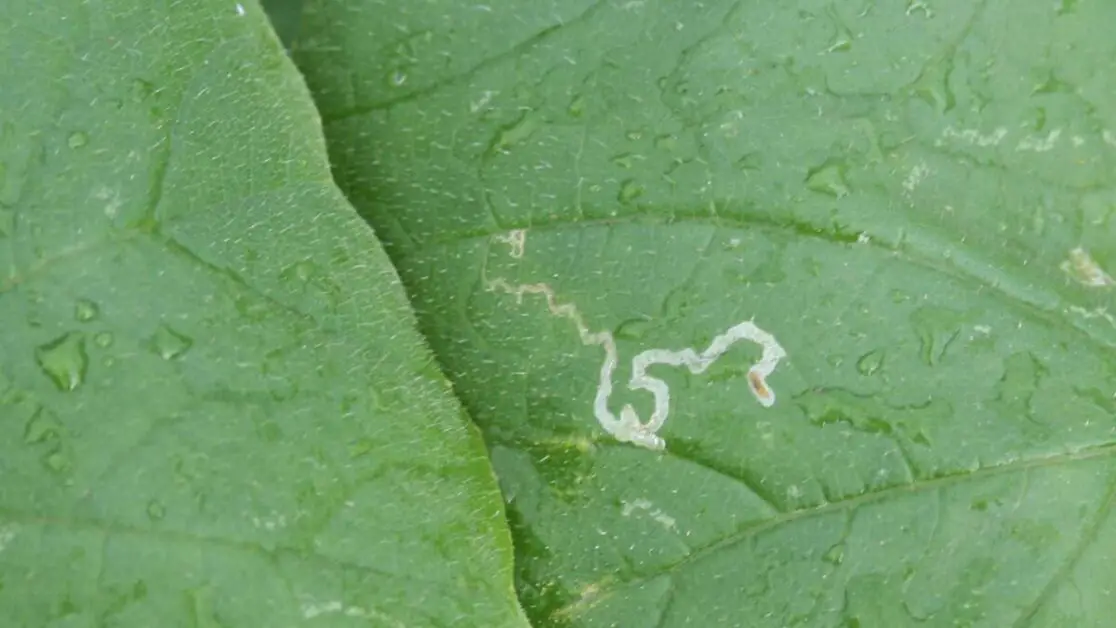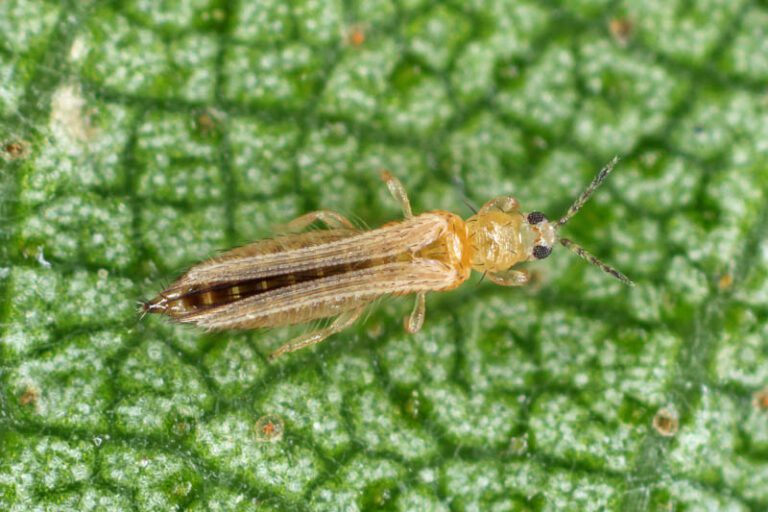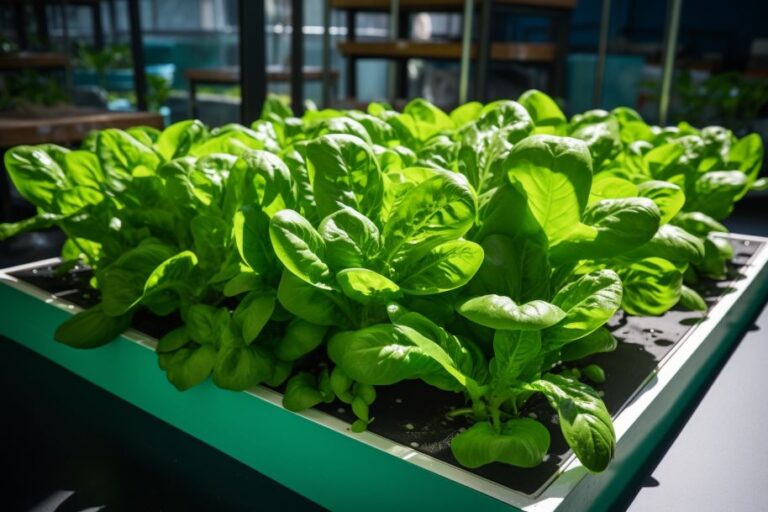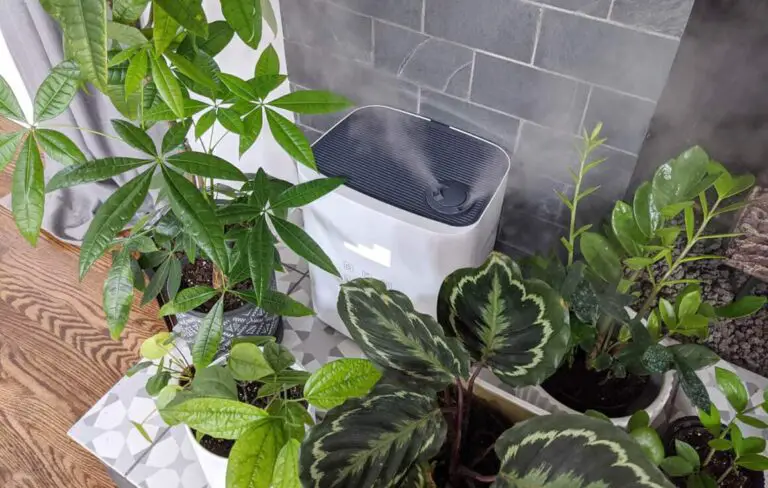How to Get Rid of Leafminers: 5 Effective Ways to Handle and Halt These Pests from Your Plants
Are you noticing unsightly tunnels or squiggly lines on your plant leaves? You might have a leafminer infestation wreaking havoc on your beloved greens! But fear not, fellow plant enthusiasts, because we’ve got you covered with five tried-and-true methods to kick those pesky pests to the curb. From natural remedies to preventative measures, we’ll explore everything you need to know to protect your plants and keep them thriving. Leafminers may be tiny, but their impact can be significant. So, join us as we delve into the world of leafminer control and reclaim your garden’s glory! Let’s banish those leafminers and ensure your plants stay healthy and vibrant.
Table of Contents
Understanding Leafminers and Their Impact on Plants
Leafminers are a common pest that can have a significant impact on plants. These tiny insects, often less than 1 mm in size, lay their eggs on the leaves of various plant species. Once the eggs hatch, the larvae burrow into the leaves and create tunnels, which are known as leaf mines. As the larvae feed on the leaf tissue, they cause physical damage and weaken the plant.
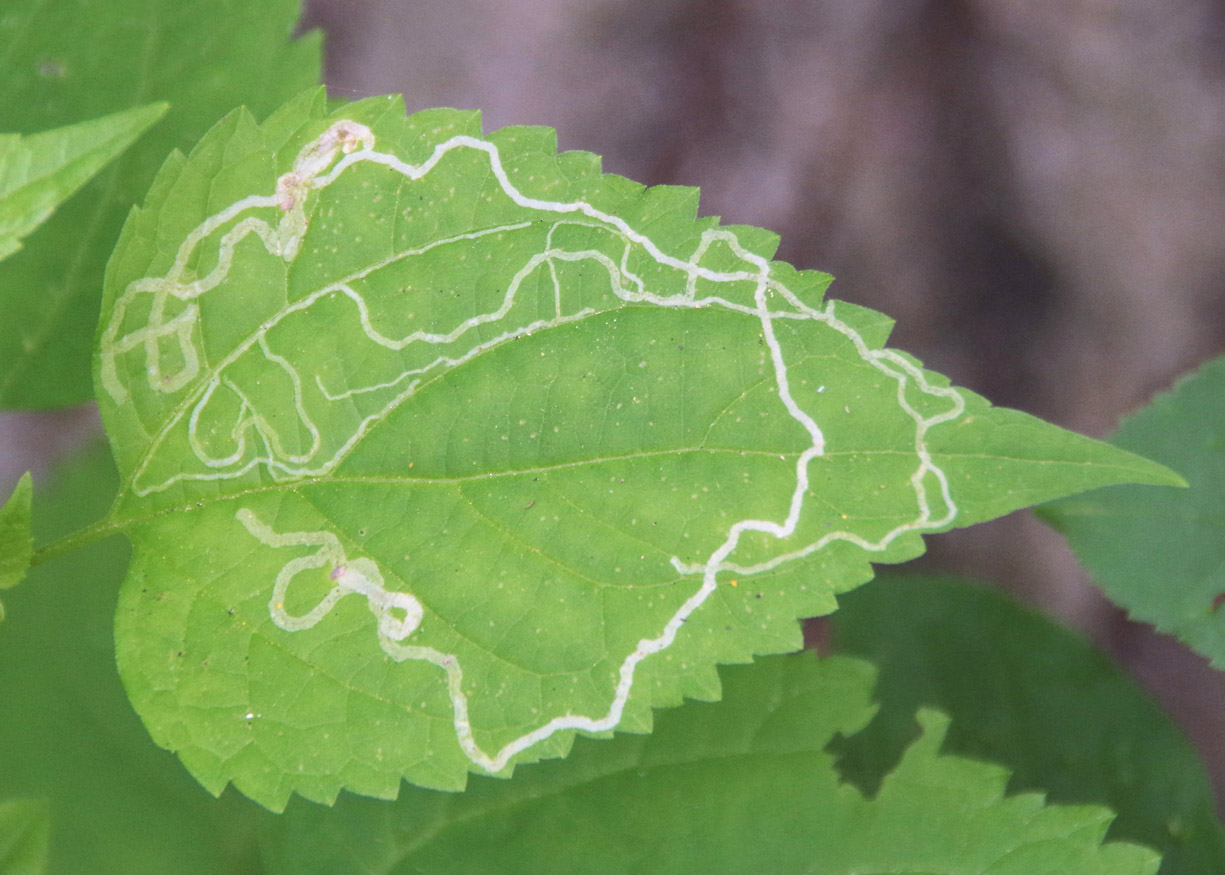
- What Are Leaf Miners?
- Leaf miners refer to the larvae of various insects, including moths, flies, beetles, and wasps.
- They share a common feeding habit: living and feeding within the leaves of host plants, tunneling between the top and bottom layers.
- Life Cycle of Leaf Miners:
- Eggs: Adult insects lay eggs on the underside of leaves.
- Larvae: After hatching, the larvae burrow into the leaf, where they feed and grow.
- Pupation: They leave the leaf to pupate in the soil or within the leaf itself.
- Adults: The adult insects emerge, mate, and continue the cycle.
- Identifying Leaf Miners and Their Damage:
- Tunnels: The most visible sign of leaf miners is the winding, squiggly tunnels they create as they feed.
- Blotches: Some leaf miners create blotchy areas within the leaf rather than distinct tunnels.
- Leaf Discoloration: Affected areas may appear lighter in color.
- Plant Stress: Severe infestations can lead to reduced plant vigor and growth.
- Crop Impact: In vegetable crops, leaf miners may reduce yield and quality.
- Prevention and Control Strategies:
- Cultural Control:
- Plant Selection: Choose resistant plant varieties where available.
- Sanitation: Remove and dispose of infested leaves to reduce populations.
- Crop Rotation: Rotate crops in vegetable gardens to disrupt the life cycle.
- Biological Control:
- Beneficial Insects: Predators like parasitic wasps can help control leaf miners.
- Birds and Chickens: Allowing birds or chickens access to infested areas may reduce populations.
- Chemical Control:
- Use selective insecticides, but be cautious as leaf miners are protected within the leaf.
- Monitoring and Hand Removal:
- Regularly inspect plants for signs of infestation.
- Remove and destroy infested leaves manually.
- Cultural Control:
Understanding the impact of leafminers on plants is essential for any gardener or plant enthusiast. By recognizing the signs of infestation and understanding the potential consequences, proactive measures can be taken to prevent and control these pests.
Identifying Leafminer Damage on Your Plants
Leafminer damage on plants can be quite distinctive, making it relatively easy to identify.
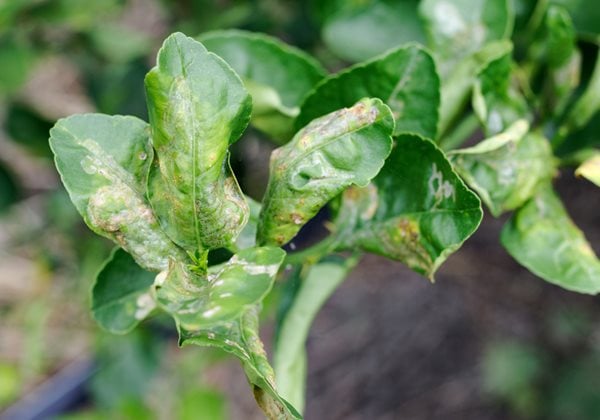
- Serpentine Tunnels or “Mines” on Leaves: Look for narrow, winding tunnels on the leaves, created by the larvae of leafminers as they feed on the plant’s tissue. These tunnels follow the path of the leaf miner and may sometimes result in small exit holes.
- Blister-Like Swellings: Keep an eye out for small, blister-like swellings on the leaves, which are caused by adult leafminers laying their eggs. These punctures, made by the adult female leafminers using their ovipositor, serve as entry points for pathogens, further harming the plant.
- Inspect Both Leaf Surfaces: When examining your plants for leafminer damage, carefully check both the upper and lower surfaces of the leaves, as leafminers can be found on either side.
- Watch for Leaf Discoloration and Wilting: Be alert to any signs of leaf discoloration or wilting, as these may also indicate leafminer infestation and potential damage to your plants.
By promptly identifying leafminer damage, you can take appropriate measures to prevent further infestation and protect the health of your plants.
Effective Cultural Practices to Prevent Leafminer Infestations
Leafminer infestations can be a major concern for gardeners and plant enthusiasts, as these tiny insects can cause significant damage to plants. However, there are effective cultural practices that can help prevent leafminer infestations and keep your plants healthy. One important practice is to maintain proper sanitation in your garden or growing area.
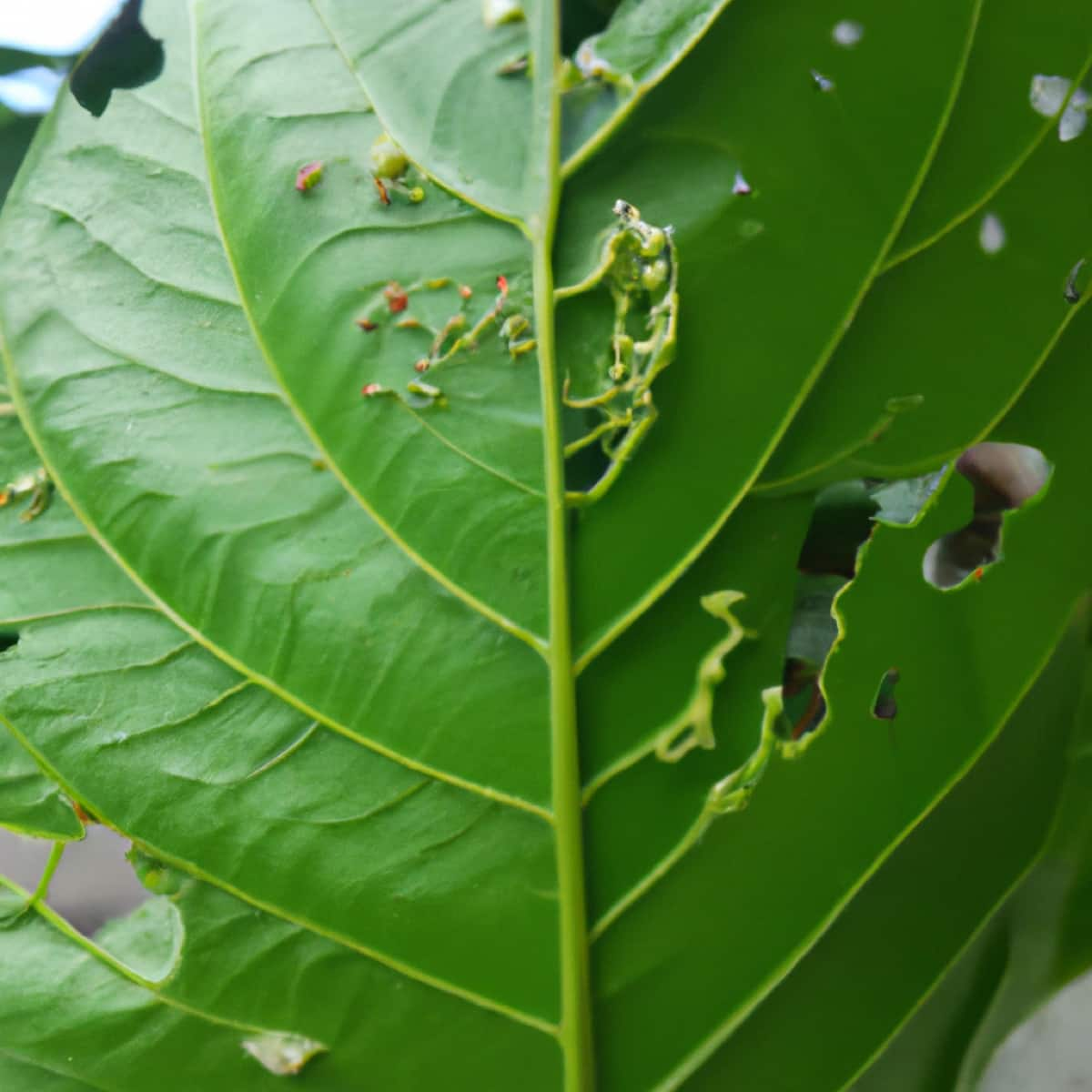
- Remove and Dispose of Infested Leaves:
- Regularly inspect your plants for signs of leafminer infestation.
- Remove and destroy any infested or damaged leaves promptly to prevent further spread.
- Pruning Affected Plant Parts:
- Prune branches or leaves that show signs of leafminer activity.
- By removing these parts, you eliminate eggs or larvae that may be present.
- Weed Control:
- Keep your garden weed-free. Weeds can harbor leafminers and act as a source of reinfestation.
- Optimal Growing Conditions:
- Provide well-balanced nutrition to your plants.
- Ensure proper watering and adequate sunlight.
- Maintain appropriate spacing between plants for good air circulation.
Remember that a combination of cultural practices and vigilant monitoring will help keep leafminers at bay and promote healthy plant growth. 🌿🪲.
Introducing Beneficial Insects as Natural Predators of Leafminers
Beneficial insects play a crucial role in maintaining the natural balance of ecosystems and can be incredibly effective in controlling leafminer populations.
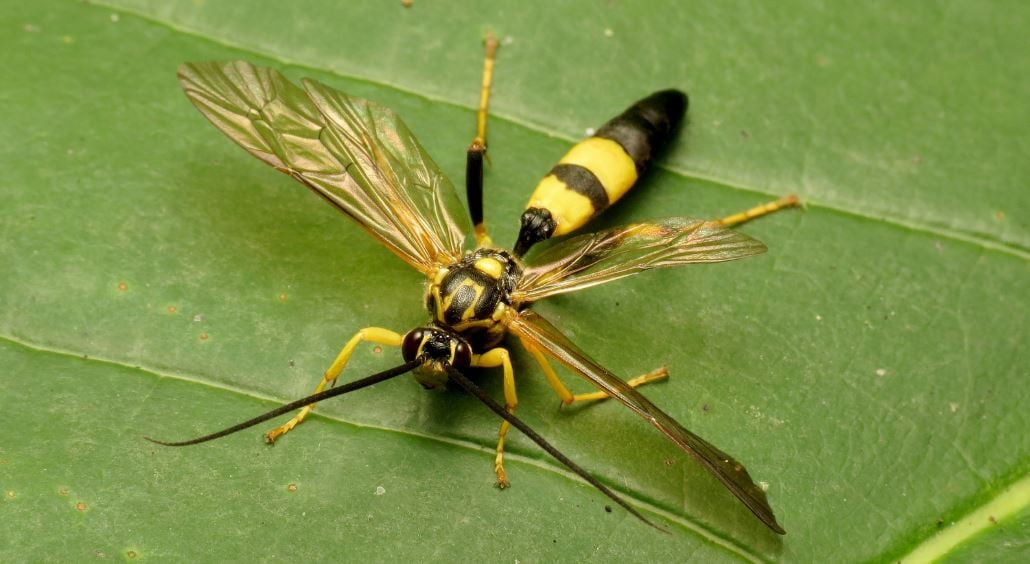
Utilizing Sticky Traps to Monitor and Control Leafminers
Sticky traps are an effective tool for monitoring and controlling leafminers in your garden. These traps consist of a sticky adhesive surface that attracts and captures adult leafminers as they fly around your plants. By placing these traps strategically throughout your garden, you can get a clear picture of the leafminer population and take appropriate action to prevent infestations.
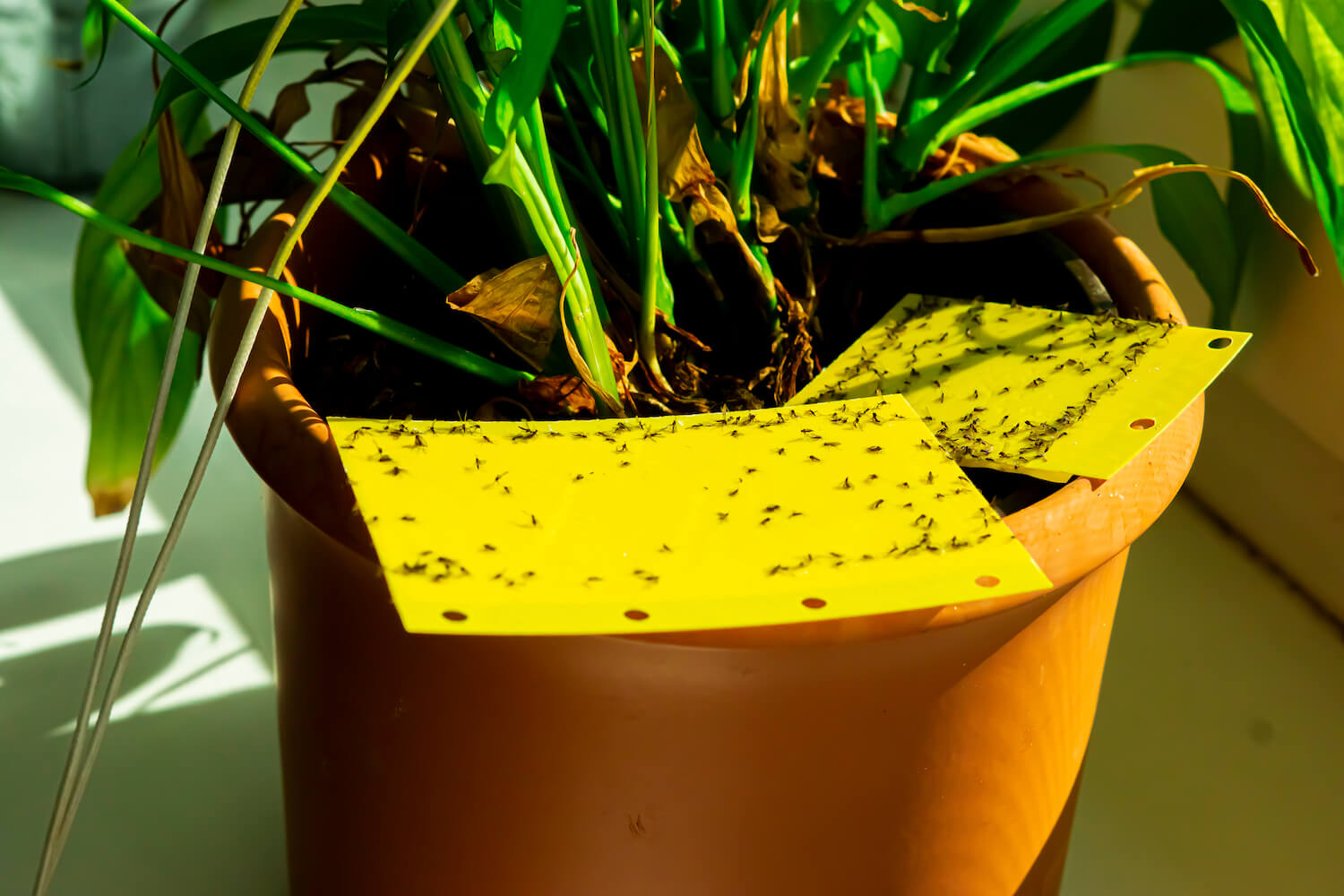
- How Sticky Traps Work:
- Sticky traps lure adult leafminers with their bright yellow color, resembling young leaves.
- Once leafminers land on the trap, they become stuck to the adhesive surface and cannot escape.
- Monitoring and Control:
- Placement: Position sticky traps near susceptible plants, especially those previously affected by leafminer damage.
- Height: Hang traps at plant height to attract adult leafminers.
- Regular Inspection: Check traps frequently and replace them when covered with debris or too many leafminers accumulate.
Using sticky traps as part of an integrated pest management strategy helps safeguard your plants’ health and beauty. 🌿🪲.
Using Trapro Dual-Sided Sticky Traps in my garden has been a game-changer for pest control. These simple yet effective traps quickly captured pesky insects like whiteflies and aphids, helping to protect my plants from damage. The dual-sided design maximized trapping surface area, ensuring thorough pest control without the need for harmful chemicals. Easy to set up and non-toxic, these traps provided peace of mind knowing they were safe for my plants and the environment. Overall, Trapro sticky traps have become an essential tool in my gardening arsenal for maintaining a healthy and pest-free garden.
- Effective Pest Control: Trapro Dual-Sided Sticky Traps provide an effective solution for controlling various pests such as whiteflies, aphids, and leafminers, helping to protect plants from damage.
- Easy to Use: These sticky traps are simple to set up and require no additional maintenance, making them convenient for both indoor and outdoor use.
- Dual-Sided Design: With adhesive on both sides, the traps maximize surface area for trapping pests, increasing their effectiveness in capturing insects.
- Non-Toxic: Made with non-toxic adhesive, these traps are safe to use around plants, pets, and children, offering peace of mind for eco-conscious gardeners.
- Versatile Application: Suitable for a wide range of plants and crops, the traps can be placed directly on plant stems or hung from branches, providing flexible pest control options.
- Limited Lifespan: The adhesive on the traps may lose effectiveness over time or become covered with dust and debris, requiring replacement to maintain optimal pest control.
- Attraction to Beneficial Insects: While effective at trapping pests, the sticky traps may also capture beneficial insects such as pollinators or predatory species, potentially disrupting the garden ecosystem.
- Weather Sensitivity: Excessive moisture or rain may reduce the adhesive properties of the traps, diminishing their effectiveness in trapping insects during wet conditions.
- Aesthetic Considerations: Some users may find the presence of sticky traps unattractive in their garden or indoor space, preferring more discreet pest control methods.
- Potential Mess: Removing trapped insects from the adhesive surface can be messy and unpleasant, requiring careful handling to avoid spreading adhesive residue or damaging plants.
Applying Organic Insecticides to Target Leafminers
Organic insecticides are an effective tool for targeting leafminer infestations in your plants. These insecticides have the advantage of being derived from natural sources, which means they are safer for the environment and for beneficial insects. When applied correctly, organic insecticides can effectively control leafminer populations and prevent further damage to your plants.
spinosad

One popular organic insecticide is spinosad, which is derived from soil bacteria and is highly effective against leafminers. It works by targeting the nervous systems of these pests, causing paralysis and eventual death. Spinosad is available in both liquid and powder forms, making it easy to apply to your plants.
Neem oil
Another organic option is neem oil, which comes from the seeds of the neem tree. Neem oil acts as a repellent, making plants less attractive to leafminers. It also disrupts their feeding and breeding behaviors, ultimately reducing their populations. Neem oil can be applied topically to plant leaves, ensuring that the leafminer larvae come into contact with the oil and are affected.
- When using organic insecticides, it is essential to follow the instructions provided by the manufacturer.
- These instructions will guide you on the proper dosage, application frequency, and safety precautions.
- Remember to always wear protective gloves and clothing when handling any type of insecticide, organic or synthetic.
- Applying organic insecticides can be an effective measure to combat leafminers and protect your plants.
- However, it is just one part of a comprehensive pest management approach.
In the next section, we will explore the use of biological controls as an alternative and sustainable way to target leafminers.
Employing Biological Controls to Combat Leafminer Infestations
Biological controls are an effective and environmentally friendly approach to combatting leafminer infestations. By harnessing the power of natural predators and parasites, we can significantly reduce leafminer populations without the need for harmful pesticides. These biological controls act as an important component of integrated pest management strategies, ensuring the long-term health and vitality of our plants.

- Beneficial Wasps: Species like Diglyphus isaea are natural enemies of leafminers. These wasps lay eggs inside leafminer larvae, killing them and helping to control populations.
- Parasitic Nematodes: Utilizing nematodes such as Steinernema feltiae is another effective biological control method. These microscopic roundworms infect and kill leafminer larvae by entering through natural body openings. Incorporating them into the soil targets leafminer pupae, preventing their emergence as adults.
- Establishing Natural Balance: Releasing beneficial insects and incorporating nematodes into affected areas helps establish a natural balance, keeping leafminer populations in check without harming the ecosystem.
- Considerations for Effective Implementation: Proper timing, temperature, humidity, and release rates are essential factors to consider when employing biological controls. Understanding these requirements ensures their successful application and maximizes their effectiveness in combating leafminer infestations while preserving ecosystem health.
With the right knowledge and application, these natural controls can provide a sustainable and efficient solution to combat leafminer infestations, benefiting both gardeners and the environment alike.
Removing Infested Leaves and Pruning Affected Plant Parts
Removing infested leaves and pruning affected plant parts is an essential practice in managing leafminer infestations. These pests can cause significant damage to plants by feeding on the tissue inside the leaves, resulting in unsightly trails or blotches. By promptly removing the infested leaves, you not only eliminate a source of food for the leafminers but also reduce the risk of the infestation spreading to other plant parts.

- Removing Infested Leaves:
- Inspect Carefully: Examine your plants for signs of leafminer activity, such as serpentine tunnels or blotches on leaves.
- Sterilized Tools: Use sterilized scissors or pruners to cleanly remove affected leaves.
- Proper Disposal: Dispose of infested leaves properly to prevent further spread. Leafminers can continue to thrive even after removal.
- Pruning Heavily Infested Branches or Stems:
- Goal: Remove leafminer larvae and pupae hiding within plant tissue.
- Prioritize: Cut out branches or stems showing extensive signs of infestation (multiple trails or severe leaf damage).
- Disinfect Tools: After each cut, disinfect pruning tools to prevent cross-contamination.
- Timing: Prune during periods of low leafminer activity (early morning or late evening).
By diligently removing infested leaves and pruning affected plant parts, you can help mitigate the impact of leafminer infestations on your plants. However, it is important to note that this practice alone may not entirely eliminate the infestation. In the next section, we will explore additional methods and strategies that can be used in conjunction with removing and pruning to effectively combat leafminer infestations.
Implementing Crop Rotation to Reduce Leafminer Populations
Crop rotation is an effective strategy that can greatly contribute to reducing leafminer populations in plants. This agricultural practice involves the sequential planting of different crops in the same area over a defined period. By alternating plant species, the life cycle of leafminers can be disrupted, making it more difficult for them to establish and thrive.
- Breaking the Life Cycle:
- Leafminers have specific host plants they prefer to infest.
- Introduce different crop species in the rotation sequence to disrupt their life cycle.
- Leafminers are forced to search for suitable plants, reducing their populations.
- Species Diversity and Resistance:
- Some plant species are less attractive or resistant to leafminers.
- Diversifying cultivated crops provides a deterrent to infestation.
- Enhances overall plant health and vitality.
- Nutrient Balance and Soil Health:
- Different crops have varying nutrient requirements.
- Crop rotation prevents nutrient imbalances that favor pests.
- Improves soil fertility, weed control, and disease management.
- Careful Planning:
- Research leafminers’ preferences and vulnerabilities.
- Consider soil types, climate conditions, and farming/gardening objectives.
- Choose an optimal crop rotation sequence.
By incorporating this practice into your cultivation strategy, you can significantly reduce leafminer populations and enjoy healthier, more robust plants.
Using Reflective Mulches to Deter Leafminers from Your Plants
Reflective mulches can be an effective tool in deterring leafminers from infesting your plants. Leafminers are small insects that lay their eggs on the undersides of leaves, which then hatch into larvae and burrow tunnels, causing unsightly leaf damage. However, the reflective properties of mulches can disrupt leafminers’ behavior and discourage them from laying eggs in the first place.
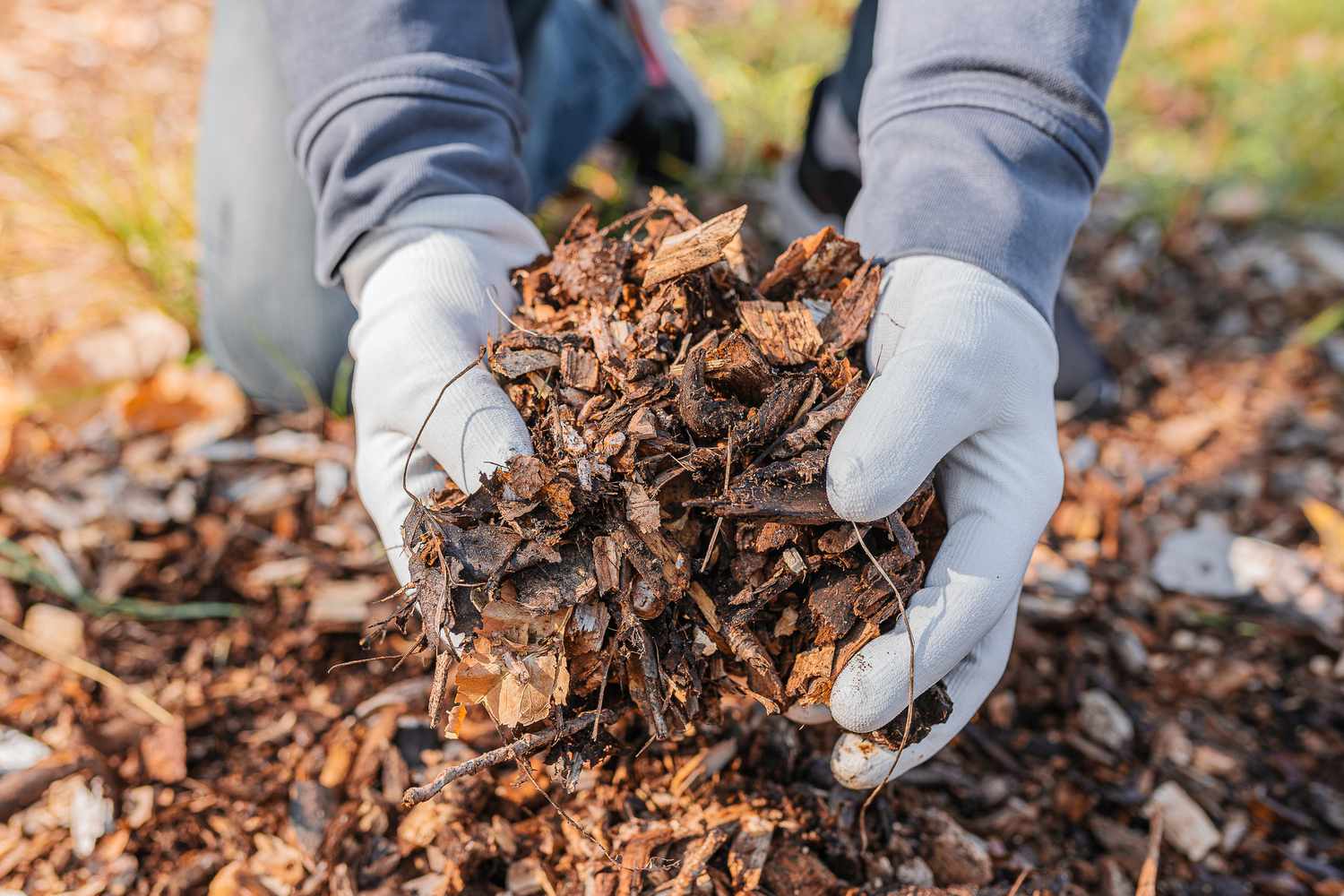
- Confusion and Disorientation: Sunlight reflecting off reflective mulches creates a flickering effect, confusing and disorienting leafminers. This hinders their ability to locate suitable egg-laying sites.
- Brightness Deterrence: The increased brightness of areas covered with reflective mulches makes them less attractive to leafminers, as they typically prefer darker and more sheltered environments for egg deposition.
- Research Findings: Studies have demonstrated the effectiveness of reflective mulches in leafminer management. For example, research on tomato plants showed up to an 80% reduction in leafminer infestation when reflective mulches were used. Similar results were observed in studies on eggplant and melon.
- Factors Influencing Deterrence: The type and color of mulch, as well as the specific plant being grown, can influence the level of deterrence achieved with reflective mulches. Understanding these factors can help optimize their effectiveness in managing leafminer infestations.
Employing Physical Barriers to Protect Plants from Leafminers
Physical barriers can be an effective method to protect your plants from leafminer infestations. By creating a physical barrier between the plant and the leafminer, you can prevent them from laying eggs and feeding on the leaves. There are various types of physical barriers that you can use, depending on the size and type of plants you are protecting.
- Floating Row Covers: Lightweight fabric covers placed directly over plants create a physical barrier against leafminers. The fine mesh allows sunlight, air, and water to reach the plants while keeping leafminers out. Ideal for protecting crops in vegetable gardens or small-scale plantings.
- Insect Netting and Mesh Screens: Insect netting and mesh screens serve as barriers to prevent leafminers from accessing plants. Netting can be draped over or placed around plants to form a protective enclosure, while mesh screens are commonly used in greenhouse settings.
- Proper Installation and Maintenance: Ensure that physical barriers are properly installed and securely sealed to prevent leafminers from bypassing them. Regular inspection and maintenance are necessary to address any potential gaps or wear that may develop over time.
- Ventilation Considerations: Proper ventilation and airflow should be considered when using physical barriers to prevent overheating and moisture buildup around the plants. Maintaining optimal growing conditions is essential for plant health and productivity.
By utilizing physical barriers such as floating row covers or insect netting, you can provide a physical obstruction that effectively keeps leafminers away from your plants. This proactive approach can be especially beneficial in preventing leafminer infestations and minimizing the damage they can cause.
Having utilized Garden Tailor Mosquito Netting in my garden, I can attest to its efficacy in keeping pesky pests at bay. The breathable mesh design effectively prevents mosquitoes, flies, and other insects from accessing my vegetables, ensuring they thrive without pest damage. Its versatility allows for easy customization to fit various garden setups, and the durable construction ensures long-lasting protection throughout the season. Overall, this netting has proven to be an invaluable asset in maintaining a healthy and pest-free garden environment.
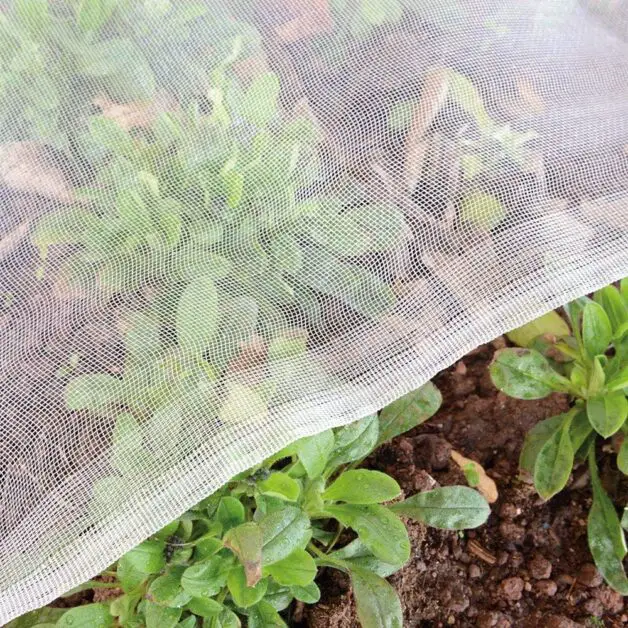
✅ Breathable Mesh: The netting is made of breathable mesh material, allowing air, sunlight, and moisture to penetrate while keeping pests out, promoting healthy plant growth.
✅ Versatile Use: This netting is suitable for various garden setups, including raised beds, vegetable patches, and container gardens, offering versatile pest control options.
✅ Easy Installation: The netting is easy to install and can be cut to size, allowing for customized coverage of different garden areas and plant configurations.
✅ Durable Construction: Made of sturdy materials, the netting is durable and long-lasting, providing season-long protection against pests without tearing or deteriorating quickly.
❌ Reduced Accessibility: While effective at keeping pests out, the netting may also impede access to plants for watering, pruning, and harvesting, requiring careful maneuvering or adjustments.
❌ Potential Tangling: The fine mesh of the netting may become tangled with plant foliage or garden structures, requiring periodic maintenance to ensure proper coverage and functionality.
❌ Installation Challenges: Setting up the netting may require additional support structures or tools, especially for larger garden areas, which could be time-consuming or challenging for some users.
❌ Cost Consideration: Depending on the size and quantity needed, the cost of purchasing and installing the netting may be prohibitive for some gardeners, especially for larger garden plots or commercial operations.
Regularly Inspecting and Monitoring Your Plants for Leafminer Presence
Inspecting and monitoring your plants regularly for leafminer presence is an essential practice in maintaining the health and vitality of your garden. Leafminers, which are small insect larvae, can cause significant damage to plants if left undetected and uncontrolled. By regularly checking your plants, you can identify early signs of leafminer infestation and take prompt action to minimize their impact.
- Inspect Leaves Closely:
- Examine both the upper and lower surfaces of leaves.
- Look for distinct trails or tunnels created by leafminers.
- These trails appear as splotchy or winding patterns.
- Signs of Leafminer Activity:
- Blister-like swellings or discolored spots may accompany the trails.
- Regular monitoring helps detect leafminer presence early.
By staying vigilant and promptly addressing any signs of infestation, you can protect your plants from leafminer damage. 🌿🪲.
| Inspecting and Monitoring for Leafminers | Key Actions and Considerations |
|---|---|
| 1. Leaf Examination | – Underside Inspection: Check the undersides of leaves, where leafminers often lay eggs. |
| – Look for Trails: Observe winding trails or mines on leaves, indicating larval activity. | |
| 2. Yellow Sticky Traps | – Strategically Placed: Position yellow sticky traps around plants to capture adult leafminers. |
| – Regular Replacement: Replace traps regularly for continued effectiveness. | |
| 3. Beneficial Insects | – Encourage Natural Predators: Attract or release beneficial insects that prey on leafminers. |
| – Ladybugs and Parasitoid Wasps: These insects are effective against leafminer larvae. | |
| 4. Pruning and Removing Infested Leaves | – Prompt Removal: Prune and discard leaves with visible leafminer activity. |
| – Dispose Properly: Avoid composting infested material to prevent further spread. | |
| 5. Neem Oil or Insecticidal Soap | – Natural Remedies: Use neem oil or insecticidal soap as organic options for control. |
| – Follow Application Guidelines: Apply as directed, considering plant sensitivity. | |
| 6. Crop Rotation | – Interrupt Life Cycle: Practice crop rotation to disrupt the continuous presence of leafminers. |
| – Diversify Planting Areas: Rotate crops with different susceptibility to leafminers. | |
| 7. Regular Garden Inspection | – Consistent Vigilance: Regularly inspect the entire garden for signs of leafminer infestation. |
| – Early Detection is Key: Identify and address issues at the earliest signs of infestation. |
Seeking Professional Help for Severe Leafminer Infestations
When faced with severe leafminer infestations on your plants, seeking professional help may be the best course of action. While cultural practices and organic treatments can effectively manage minor infestations, severe cases may require the expertise of a professional in the field.
- Accurate Identification:
- Pest control specialists can identify the specific type of leafminer causing the infestation.
- Their expertise ensures accurate diagnosis and targeted treatment.
- Tailored Treatment Options:
- Professionals recommend effective treatments customized to your situation.
- They may have access to specialized insecticides or biological controls not readily available to home gardeners.
- Efficient Combat:
- Pest control specialists use specialized equipment to efficiently combat severe leafminer infestations.
- Their expertise extends beyond treatment to preventive measures.
- Healthier Plants:
- Seeking professional help ensures comprehensive and effective treatment.
- Your plants will benefit from expert care, leading to healthier and more resilient foliage. 🌿🪲.
Watch more in the given video:
FAQ
What are leafminers?
Leafminers are insects that belong to the family Agromyzidae. They lay eggs on the surface of leaves, and the larvae tunnel into the leaf, creating distinctive mines or tunnels. These tunnels can cause significant damage to the leaf and affect the overall health of the plant.
How can I identify leafminer damage on my plants?
Leafminer damage is characterized by serpentine tunnels or mines on the leaves, which appear as light-colored trails. The affected areas may turn brown or dry out, and the leaves may become distorted or drop prematurely. By closely inspecting the leaves, you can often find the tiny larvae or pupae inside the mines.
What cultural practices can help prevent leafminer infestations?
There are several effective cultural practices you can implement to prevent leafminer infestations. These include regularly removing plant debris, practicing proper sanitation in your garden, spacing plants adequately to improve air circulation, and avoiding over-fertilization, as excessive nitrogen can attract leafminers.
How can I introduce beneficial insects as natural predators of leafminers?
To naturally control leafminer populations, you can introduce beneficial insects such as parasitic wasps, predatory beetles, or lacewings into your garden. These insects feed on leafminer larvae, helping to reduce their numbers. You can purchase these beneficial insects from specialized suppliers and release them in your garden.
How do sticky traps help in monitoring and controlling leafminers?
Sticky traps are an effective tool for monitoring and controlling leafminers. These traps contain adhesive surfaces that attract and trap adult leafminers. By regularly inspecting the traps, you can monitor the presence and level of leafminer infestations. Additionally, the traps can help to reduce the adult population by capturing them before they can lay eggs.
Can organic insecticides be used to target leafminers?
Yes, organic insecticides can be used to target leafminers. Certain formulations containing botanical oils or insecticidal soaps can effectively control leafminers without harming beneficial insects. However, it is important to carefully follow the instructions provided by the manufacturer to ensure safe and effective use.
How can biological controls be employed to combat leafminer infestations?
Biological controls involve the use of natural enemies to manage leafminer populations. This can include the introduction of predatory insects, like ladybugs or green lacewings, or the application of microbial insecticides that specifically target leafminers. These methods can be effective in reducing leafminer populations without resorting to chemical insecticides.
Should I remove infested leaves and prune affected plant parts to control leafminers?
Yes, removing infested leaves and pruning affected plant parts can help control leafminer infestations. By removing the damaged leaves or plant parts, you eliminate a significant portion of the leafminer population. Be sure to dispose of the infested material properly to prevent the spread of leafminers to other plants.
How can crop rotation reduce leafminer populations?
Crop rotation involves planting different crops in the same area each year to disrupt the life cycle of leafminers. By changing the host plants, you make it more difficult for leafminers to find suitable breeding sites and reduce their populations over time. This practice is especially beneficial in vegetable gardens or areas with a history of leafminer infestations.
Can reflective mulches deter leafminers from plants?
Yes, reflective mulches can help deter leafminers from your plants. These mulches are made of reflective materials, such as aluminum foil or plastic, which create a bright and confusing environment for the leafminers. This can deter them from landing on the plants and reduce the chances of infestation.
How can physical barriers be used to protect plants from leafminers?
Physical barriers, such as floating row covers or fine mesh netting, can be used to physically exclude leafminers from reaching your plants. These barriers create a barrier that prevents adult leafminers from laying eggs on your plants, effectively reducing the chances of infestation. Be sure to secure the barriers properly to prevent any gaps or openings.
Why is it important to regularly inspect and monitor plants for leafminer presence?
Regular inspection and monitoring of plants is crucial to detect leafminer presence at an early stage. By regularly checking your plants, you can identify signs of leafminer damage or the presence of adult insects. Early detection allows for prompt intervention, preventing the infestation from spreading and causing further damage.
When should I consider seeking professional help for severe leafminer infestations?
If you have tried various control methods and still cannot effectively manage severe leafminer infestations, it is advisable to seek professional help. Pest management professionals have the expertise and experience to assess the severity of the infestation and provide appropriate treatment options to mitigate the issue effectively.

Studied Agricultural Engineering-Plant Protection at University of California, Davis.
Head of Content writing team at Southelmontehydroponics.com

